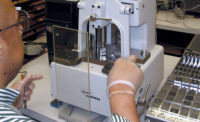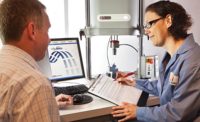Digital microscopy has created a lot of buzz in the field of microscopy and there are some facts that are useful to know. We have been often asked about digital microscopes by users familiar with the traditional stereo and compound microscopes. Here are comprehensive answers to the most frequent and important questions.
What exactly is a digital microscope?
A digital microscope is an optical microscope equipped with a digital camera, but there are no eyepieces. An image of the sample is observed and analyzed directly on an electronic monitor display. Conventional stereo or compound microscopes that have eyepieces, but are also equipped with a digital camera, may be used in a similar manner as digital microscopes. Many digital microscopes are able to save with the recorded image data information about the microscope and camera parameters. For the remainder of this article, we will use the term “digital microscopes” to refer only to microscopes without eyepieces having a digital camera. Stereo or compound microscopes with eyepieces and equipped with digital cameras are not considered for the answers below.
For which applications are digital microscopes mainly used?
Digital microscopes are ideal instruments for analysis and documentation of parts, components, and samples during research and development (R&D), manufacturing and inspection, quality control and assurance, as well as failure analysis.
What are the advantages of digital microscopes?
The most obvious advantage is the ergonomics of the instrument. Because the image of the sample is displayed on a monitor (and not viewed through eyepieces), users are able to view and analyze it immediately using software while sitting in a comfortable and relaxed, upright position. The ergonomics of digital microscopes are especially advantageous if a high sample throughput has to be achieved or if people work with microscopes for a long period of time every day. In addition, many digital microscopes offer software that allows storage of multiple user profiles. This feature is especially beneficial if many different users work with the same microscope—each user can simply select his or her microscope profile and immediately start working with few or no adjustments to the microscope working station.
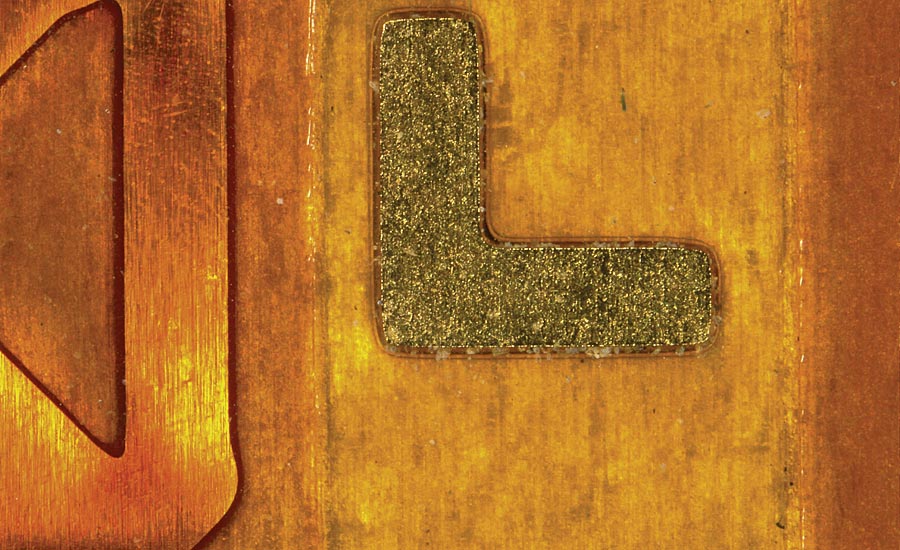
Gold (Au) plated bonding pad from automotive electronics imaged at 120x total magnification. Image acquired with the DVM6 digital microscope.
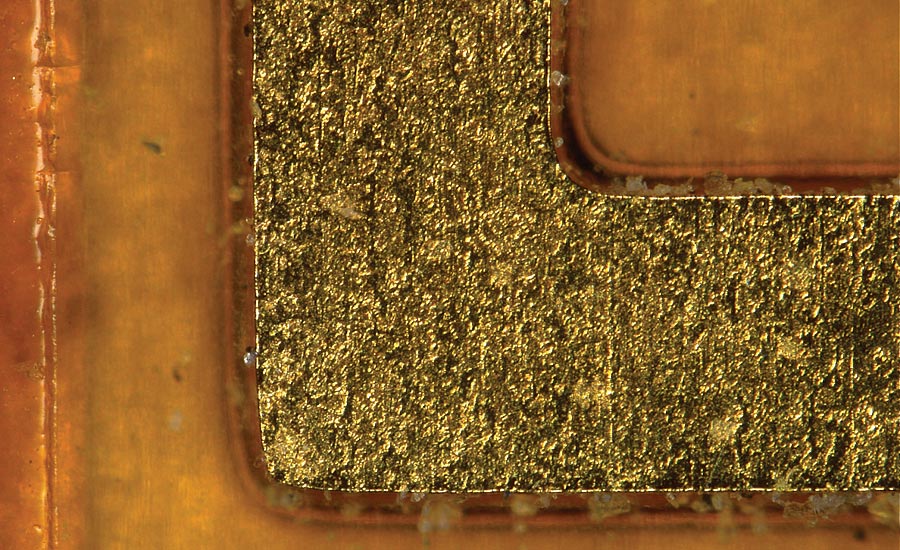
Gold (Au) plated bonding pad from automotive electronics imaged at 360x total magnification. Image acquired with the DVM6 digital microscope.
What are the limitations of digital microscopes?
A very obvious limitation of digital microscopes, compared to stereo or compound microscopes, is the need for a power connection. Because there are no eyepieces, the image of the sample for digital microscopes is always displayed on a monitor. Therefore, at least one power cable is needed to operate it. In general, digital microscopes also need a connection to a display monitor or even a PC. Additionally, with traditional microscopes, users still have the option of using eyepieces to view their sample.
Is the image of a sample seen by digital microscopes comparable to that seen through eyepieces?
In principle, the image is the same. There may be a difference in the field of view depending on the type of digital camera and eyepieces in question. However, there is one important difference: sample observation via the binocular eyepieces of a stereo microscope gives you a 3D depth perception that you cannot achieve directly with a 2D image from a digital microscope.

Pattern printed on paper imaged at 750x total magnification using ring light illumination. Image acquired with the DVM6 digital microscope.
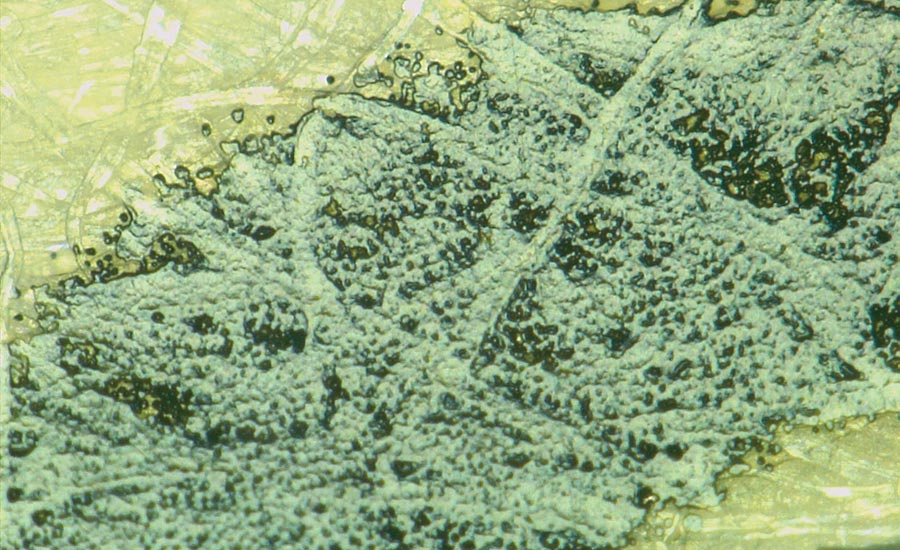
Pattern printed on paper imaged at 750x total magnification using coaxial illumination with the quarter wave plate polarizer open. Image acquired with the DVM6 digital microscope.
Is a digital microscope easier to use than a microscope with eyepieces?
Inexperienced users, in particular, can obtain images of a sample easier and faster. The main reason is that it takes time to get used to setting up and adjusting a traditional microscope and viewing the sample through the eyepieces.
What does “encoding” mean?
A microscope is “encoded” when its hardware are in direct communication with computer software and when specific parameter values are tracked and saved with the image data. These specific parameters, e.g., optics, lighting and camera settings, sample stage position, etc., are referred to as encoded. Normally, these encoded parameters can be recalled at the touch of a button to make repetitive workflows, documentation, and reporting easier.
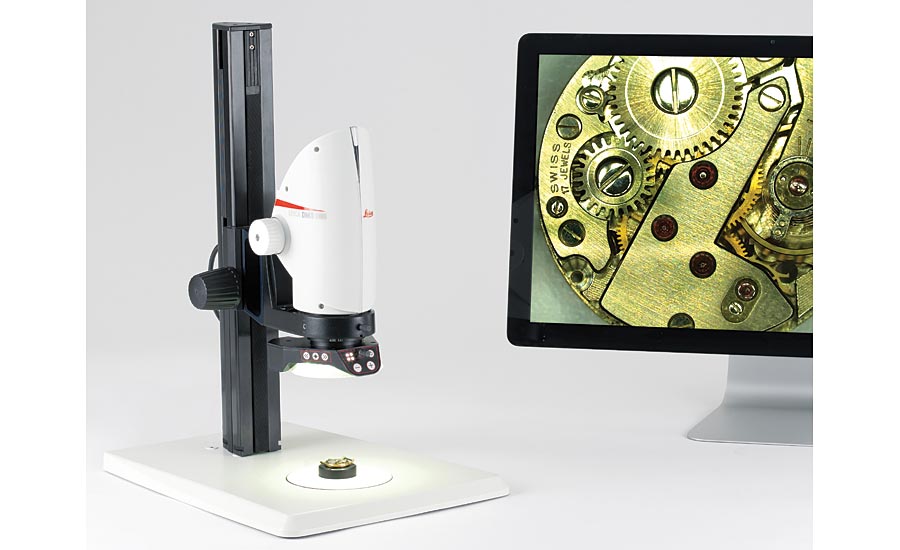
The DMS1000 digital microscope
Can only experts in microscopy operate a digital microscope?
No. Digital microscopes can be used by novices to microscopy, as well as by microscopy experts. Many digital microscopes are designed for easy, “out of the box” use, with minimal time investment needed to learn how to use them. They would have encoded parameters and allow for rapid and easy documentation and report generation, making repetitive workflows more efficient.
Which microscope components, accessories, or features are required for a digital microscope?
The components, accessories, and features necessary depend on the application. For example, the choice of objective lenses will depend on the magnification range needed. There are also a variety of microscope stands and lighting systems available.
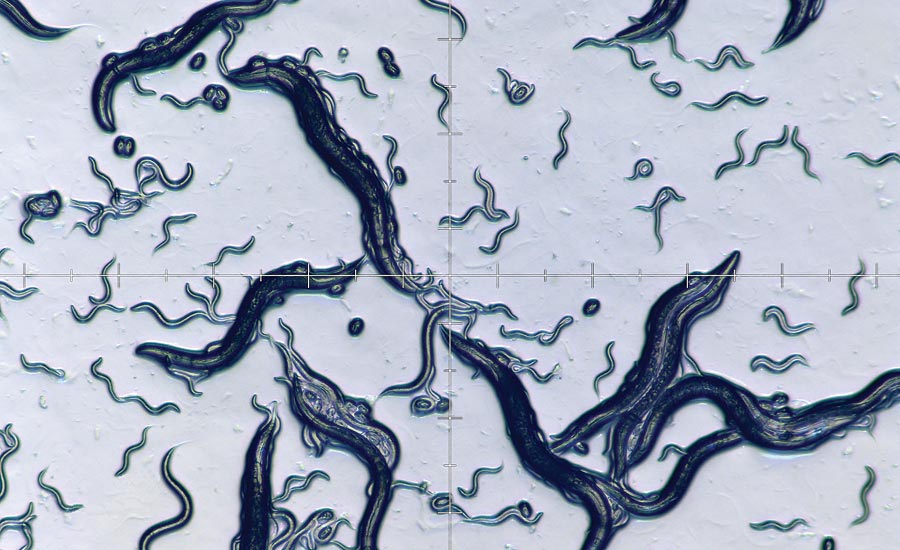
Image of the roundworm Caenorhabditis elegans captured with a transmitted light base. Fast and easy measurements can be done, because of the continuously encoded zoom optics. Acquired with the DMS1000 B digital microscope.
The following questions can help users decide which microscope components, accessories, or features are most useful for the intended application:
Q: Is there a need for rapid acquisition of high resolution digital images?
A: If so, then choose a digital camera with a large number of pixels, 5 to 20 megapixels, or perhaps even a fast pixel shift camera.
Q: Is there a need for a fast live image display to attain high sample throughput?
A: If so, the camera should perform at 30 frames per second or faster.
Q: Is there a need to look at samples from various viewing angles?
A: If so, tilting of the microscope head or rotation of the sample stage are essential for dynamic sample viewing, especially for quality control and failure analysis.
Q: Is there a need to analyze samples in a qualitative or quantitative way?
A: If so, it is important to select carefully the software features and functions so that either qualitative or quantitative analysis is achieved.
Q: Is there a need for images with balanced brightness and contrast, showing both bright and dark sections of the image clearly?
A: If so, then the feature HDR (high dynamic range) would be very helpful, as it provides exactly this sort of image. Q
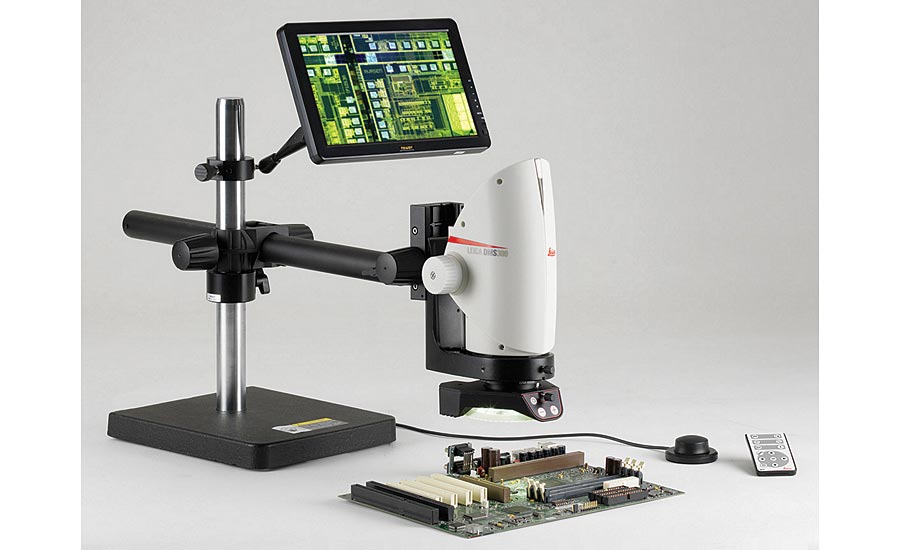
Inspection of a printed circuit board (PCB) using the DMS300 digital microscope mounted on a swingarm stand.

